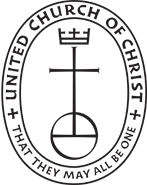Gleanings From
In Christian Fellowship
By Shirley Lindahl
Edited by Jerry Rutherford
Arrival of Peter Kirk
In 1888 rumors had been rampant that an enterprising Englishman named Peter Kirk was attempting to interest financiers in backing his plan for a steel mill in the area immediately north of Houghton.
Kirk envisioned a "Pittsburgh of the West" with a steel mill patterned after the one he operated in England. He would obtain the iron ore from the mines of A. A. Denny in the Snoqualmie Mountains. With the West being opened by the railroads he saw a ready market for steel rails.
With Leigh Hunt, owner of the Seattle Post Intellignecer, A. A. Denny and George Heilbron, Seattle businessmen and Walter Williams, a fellow Englishman, Peter Kirk set up the Kirkland Land and Improvement Co. Since aliens could not purchase land, he needed the assistance of the Seattle Businessmen to acquire the site for his steel mill. The area selected was the homesteads of John DeMott and Ed Church.
Land sales frantically took place as local families sold their property to Leigh Hunt in the name of the Land Company. In a matter of months he had purchased over 1200 acres.
John George Kellett came from England with Kirk and was given the responsibility for platting the newly acquired land into a town site. He decided the lake shore reminded him of the setting of the steel works in England so he gave it the name of Moss Bay. He wanted the town named for the man who was planning to make it into a city of 50,000---so he called it "Kirkland."
The group had been unsuccessful in purchasing property from many of the settlers south of Moss Bay so they decided to center the town on the hill to the north. Large brick houses were built for the executives of the newly formed Moss Bay Iron and Steel Works. Several of these are still standing in the 400 and 500 blocks of 10th Ave. West. (Jo Ann and George Harris reside in one of these homes which they restored.) Construction began on large brick office buildings, a bank and stores in what was to be the town square at Market St. and Piccadilly (7th Ave.). Hillside lots west of Market were platted at an angle so as many as possible would enjoy a view of the lake. (I always wondered why those streets were at an angle!)
In the fall of '88 the wife of Peter Kirk left her palatial home in England and with her 8 children traveled first to Victoria, B.C. until housing could be arranged in Kirkland.
The railroad refused to build a line along the marshy lake shore and chose to construct it on the hill east of the town site. The town site was replatted and the mill site relocated. Piccadilly (7th Ave.) was extended and planked up the hill to the mill site on land which was purchased from Dorr and Eliza Forbes near the lake that bears their name (Forbes Lake is now called Lake Kirkland).
Problems arose daily. The lack of a rail line to the ore and coal fields raised doubts in the minds of some but work still went on at the mill site. Kirkland was making front page news in the Puget Sound papers in 1889---as well as the stories on the great fire in Seattle.
Back to History Previous Gleaning Next Gleaning
